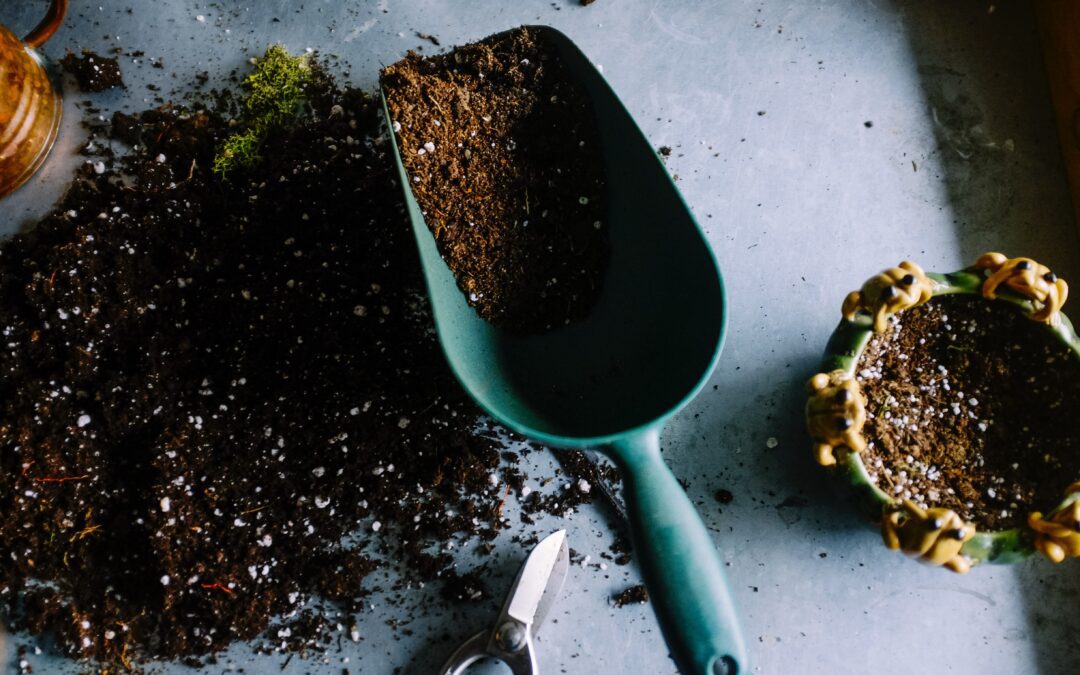Puedo crecer mi propia comida?
No digo que vayas a tener una granja en tu patio trasero con sábanas y vacas, pero cultivar algunos ingredientes que usamos en nuestra cocina diaria no sólo puede ayudarte a reducir tu huella alimentaria, sino también a ahorrar un poco de dinero. Si tienes una ventana a la que le dé la luz del sol, una cesta colgante, pero si tienes la suerte de tener un pequeño jardín, puedes hacer maravillas. Y una buena noticia, no necesitas mucho para empezar, te vale con macetas, semillas, buena tierra y algunas herramientas de jardinería. Dedica tiempo ahora que llega el invierno a planificar lo que vas a hacer para que en verano estés rodeado de verduras y hierbas. Hablemos de este plan.
Primero, necesitas conocer tu espacio, un espacio con 6-8 horas de luz solar, y dependiendo de lo que quieras cultivar, si tienes el espacio y la pendiente disponibles para ello. Además, es posible que quieras realizar un análisis del suelo para ver si tiene los nutrientes necesarios para plantar. Segundo, piensa en tus objetivos de jardinería, cuánto tiempo, dinero y esfuerzo quieres y puedes dedicar a este proyecto, sé lo más realista posible. Es posible que quieras empezar poco a poco e ir añadiendo más a medida que veas progresos. Tercero, elige tus semillas, analiza el entorno en el que vives y determina qué puede prosperar en él. Hay muchas empresas que venden semillas ecológicas y no transgénicas entre las que elegir. Cuarto, haz un mapa, haz una tabla de espaciado en función de lo que piensas cultivar para ver si cabe o no, y para ver cuánto espacio dejar entre las semillas. Los alimentos más fáciles y comunes que puedes cultivar son
- Cebollas y ajos
- Patatas
- Hierbas
- Fresas
- Hojas de ensalada
- Pimientos
- Apio
- Tomates
- Cúrcuma
- Jengibre
Además, la jardinería es un bonito pasatiempo. Te permite conectar con la naturaleza, salir al exterior, tener un objetivo en el que centrarte y al final puedes disfrutar de los resultados por los que has trabajado. Ayuda a tu cartera y al medio ambiente. Y no hay nada mejor que saber exactamente de dónde proceden tus verduras, qué se ha utilizado en ellas y qué procedimiento. Es una sensación realmente gratificante, y cocinar con ingredientes tan frescos como los de Kuxtal. Incluso puedes hacer tus arreglos de macetas en la cocina con diferentes condimentos como albahaca, romero, etc.
Can I grow my own food?
I’m not saying you’ll have a farm in your backyard with sheets and cows, but growing a few ingredients that we use in our everyday kitchen can not only help reduce your foodprint but save you a bit of money too! If you have a window still that’s gets sunlight, a hanging basket, but if you’re lucky enough to have small garden, you can do wonders. And good news, you don’t need much to get started, you’re good with pots, seeds, good soil, and a few gardening tools. Take time now that winter is coming to plan out what you’ll do so that by summertime you’ll be surrounded by veggies and herbs. Let’s talk about this plan.
First you need to understand your space, a space with 6-8 hours of sunlight, and depending on what you want you grow, if you have the space and slope available for it. Also, you may want to conduct a soil test to see if it has the needed nutrients to plant. Second, think about your gardening goals, how much time, money and effort you want and can put on this project, be as realistic as possible. You may want to start small and add more as you see progress. Third, choose your seeds, analyze the environment you live in and determine what can thrive in it. There are many companies that sell organic, non-GMO seed to choose from. Fourth, make a map, make a spacing chart depending on what you’re planning to grow to see whether it will fit or not, and to see how much space to leave in between seeds. The easiest and most common food you can grow are:
- Onions and garlic
- Potatoes
- Herbs
- Strawberries
- Salad leaves
- Peppers
- Celery
- Tomatoes
- Turmeric
- Ginger
Plus, gardening is a beautiful hobby. It lets you connect with nature, go outside, have a goal to focus on, and at the end you can enjoy the results you’ve worked for. It helps your wallet and the environment. And there’s nothing better than knowing exactly where your vegetables came from, what was used in them and what procedure. It’s a really rewarding feeling, and cooking with ingredients as fresh as Kuxtal’s. You could even make your arrange of pots in the kitchen with different condiments like basil, rosemary, etc.

